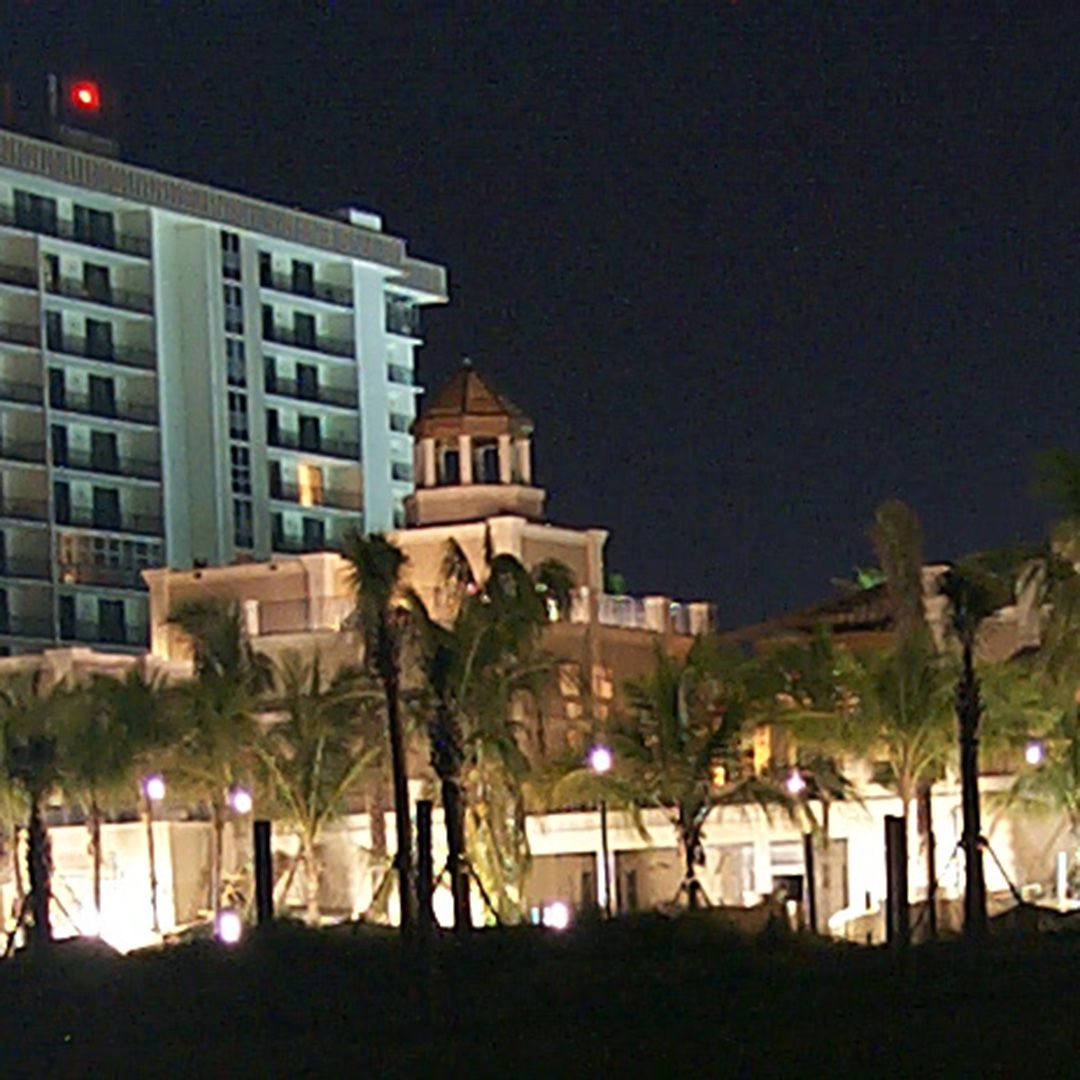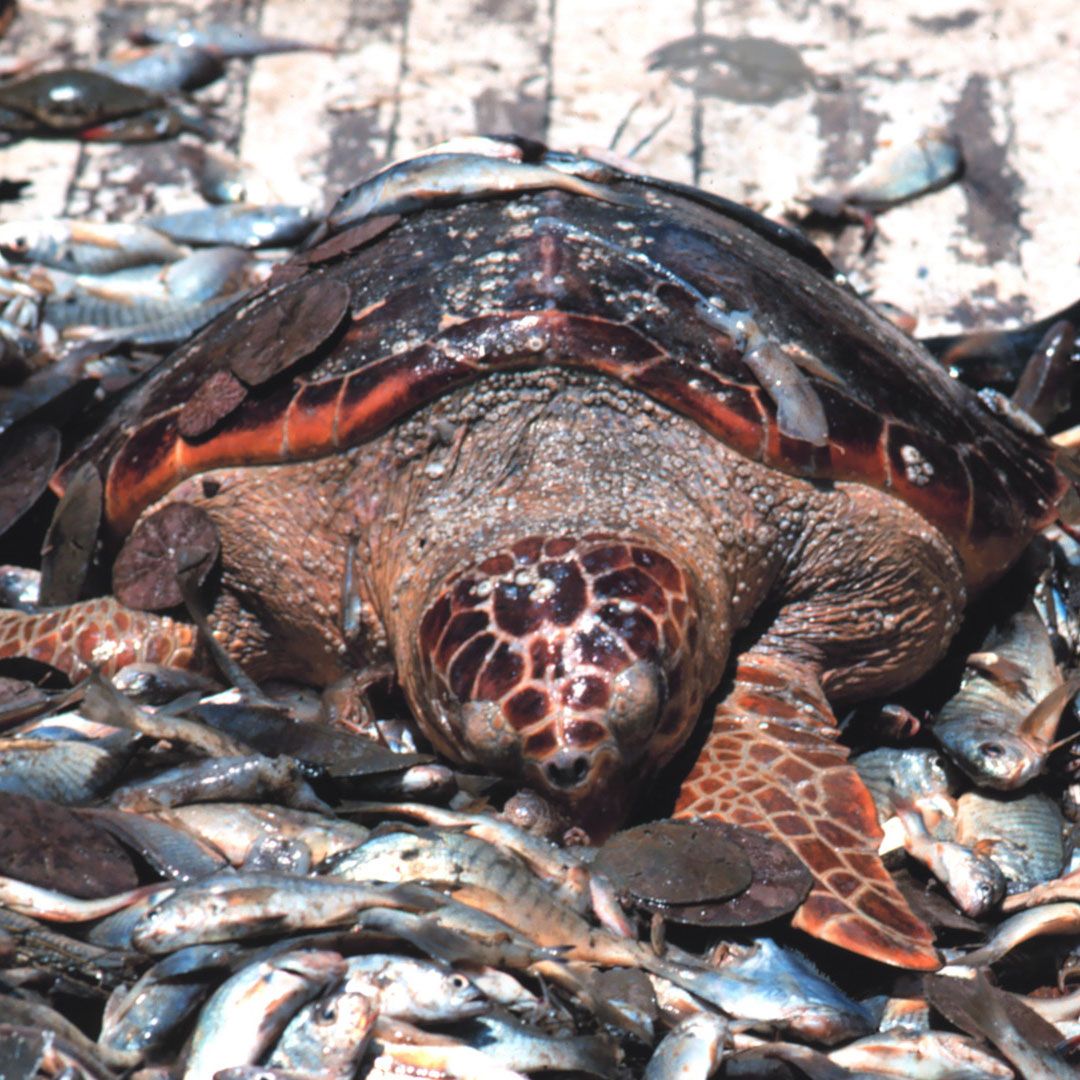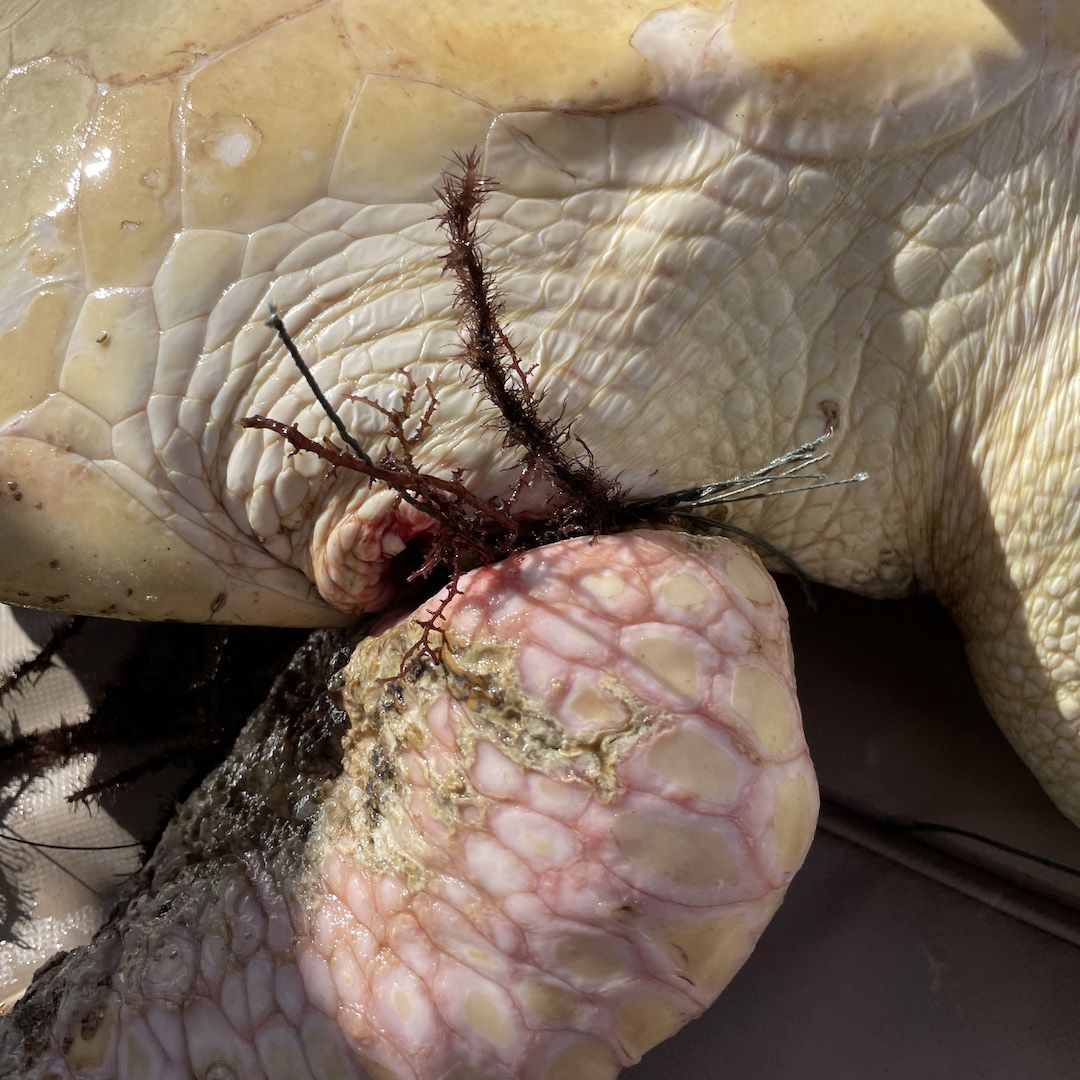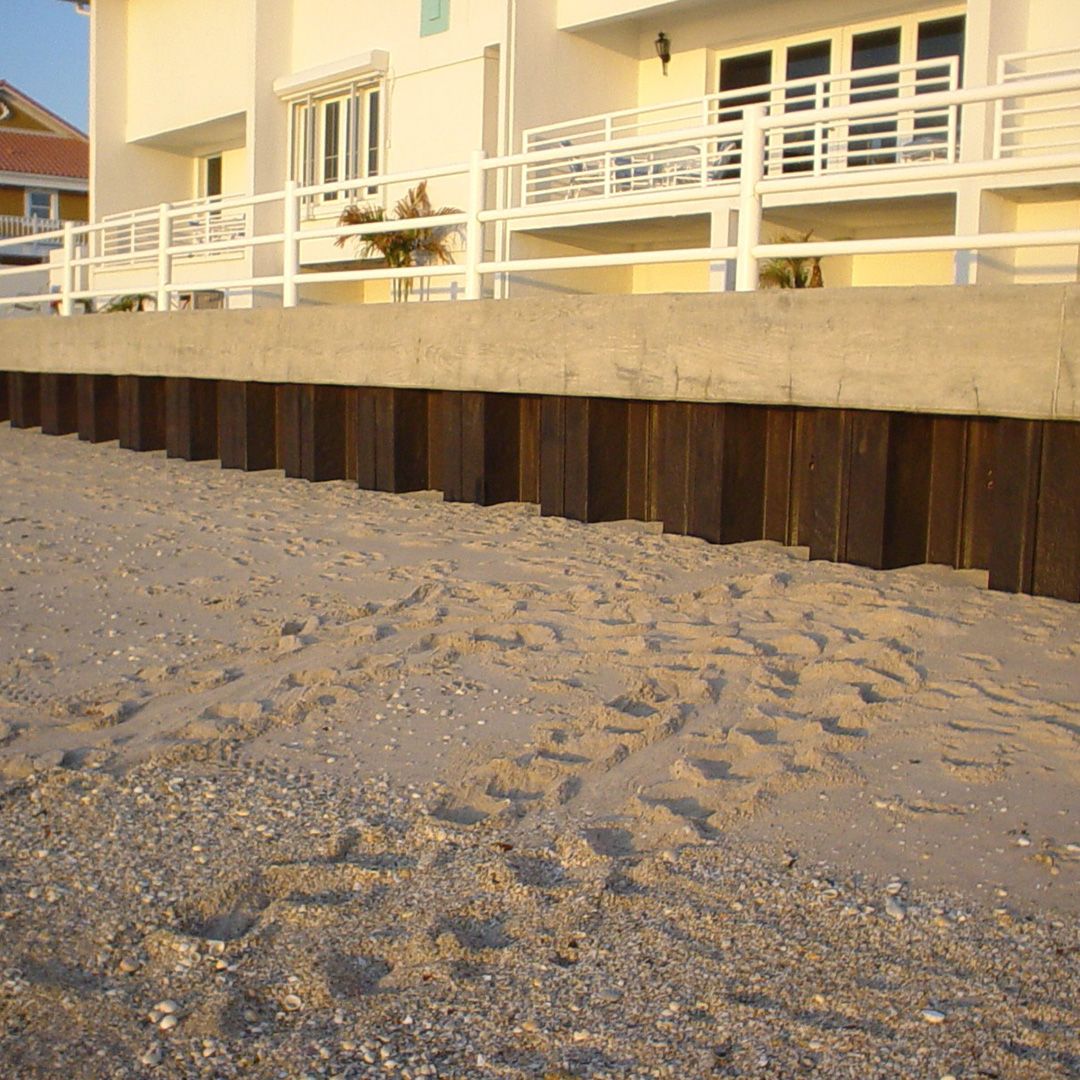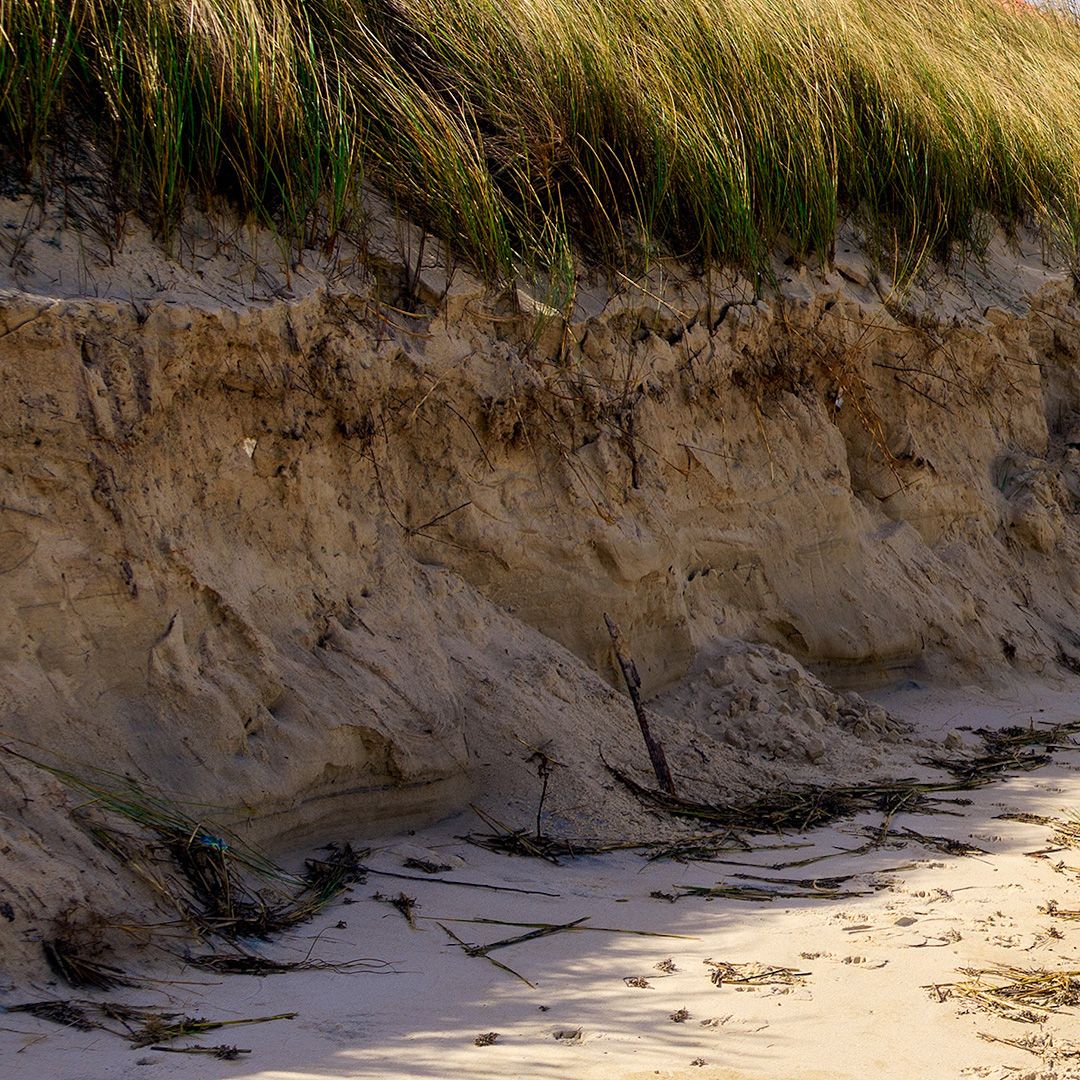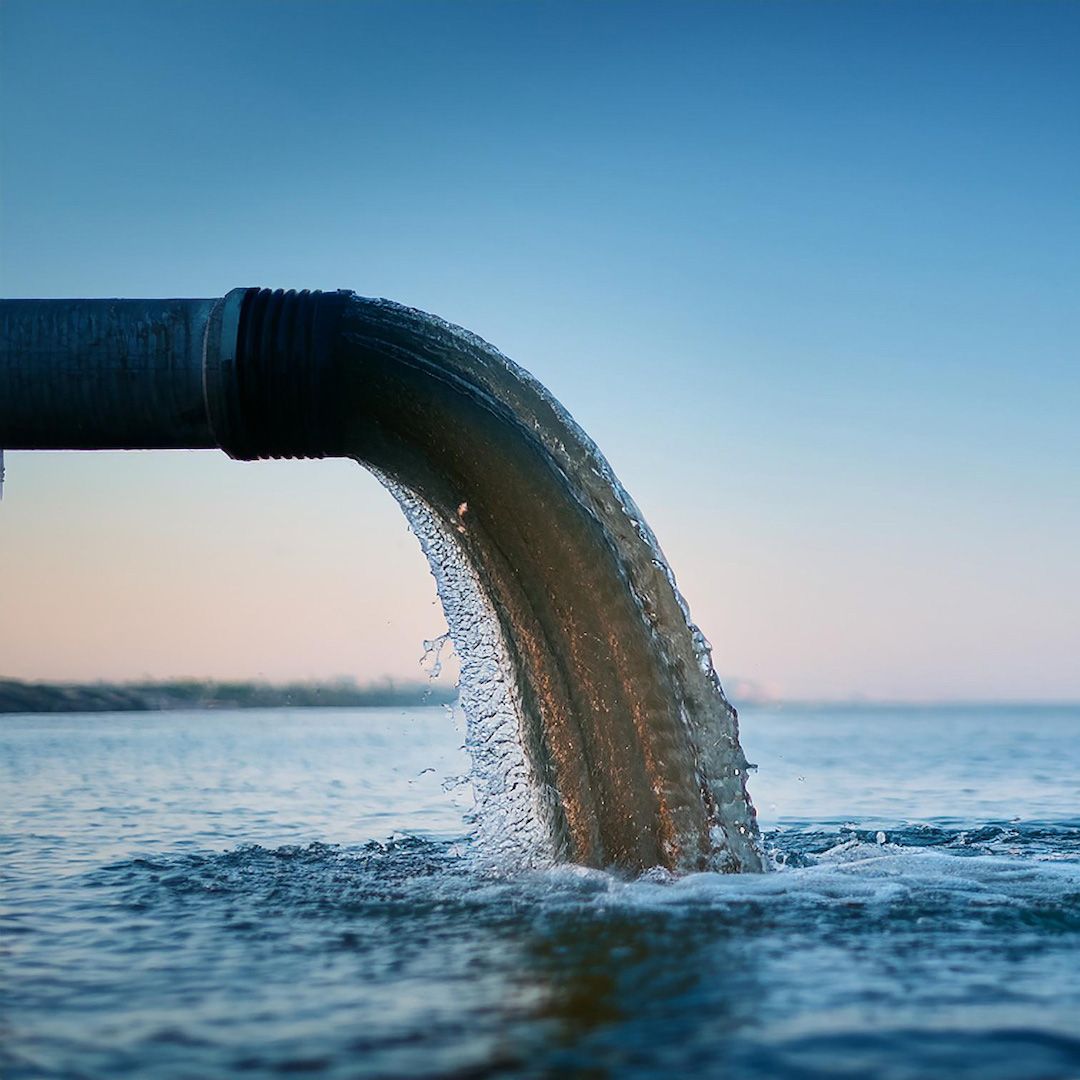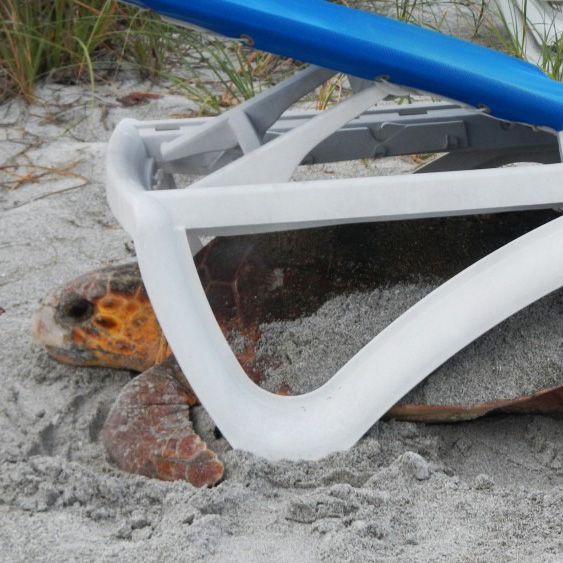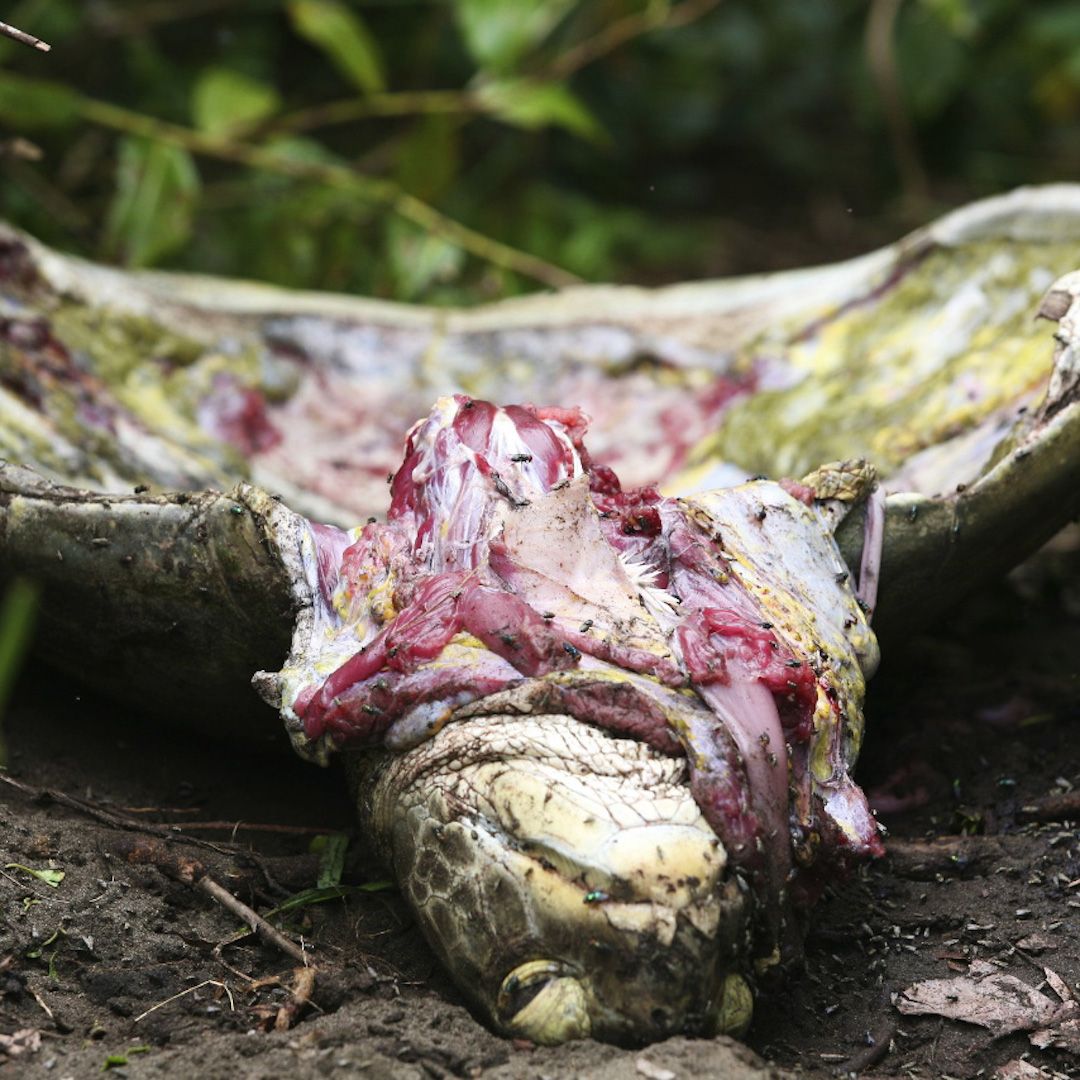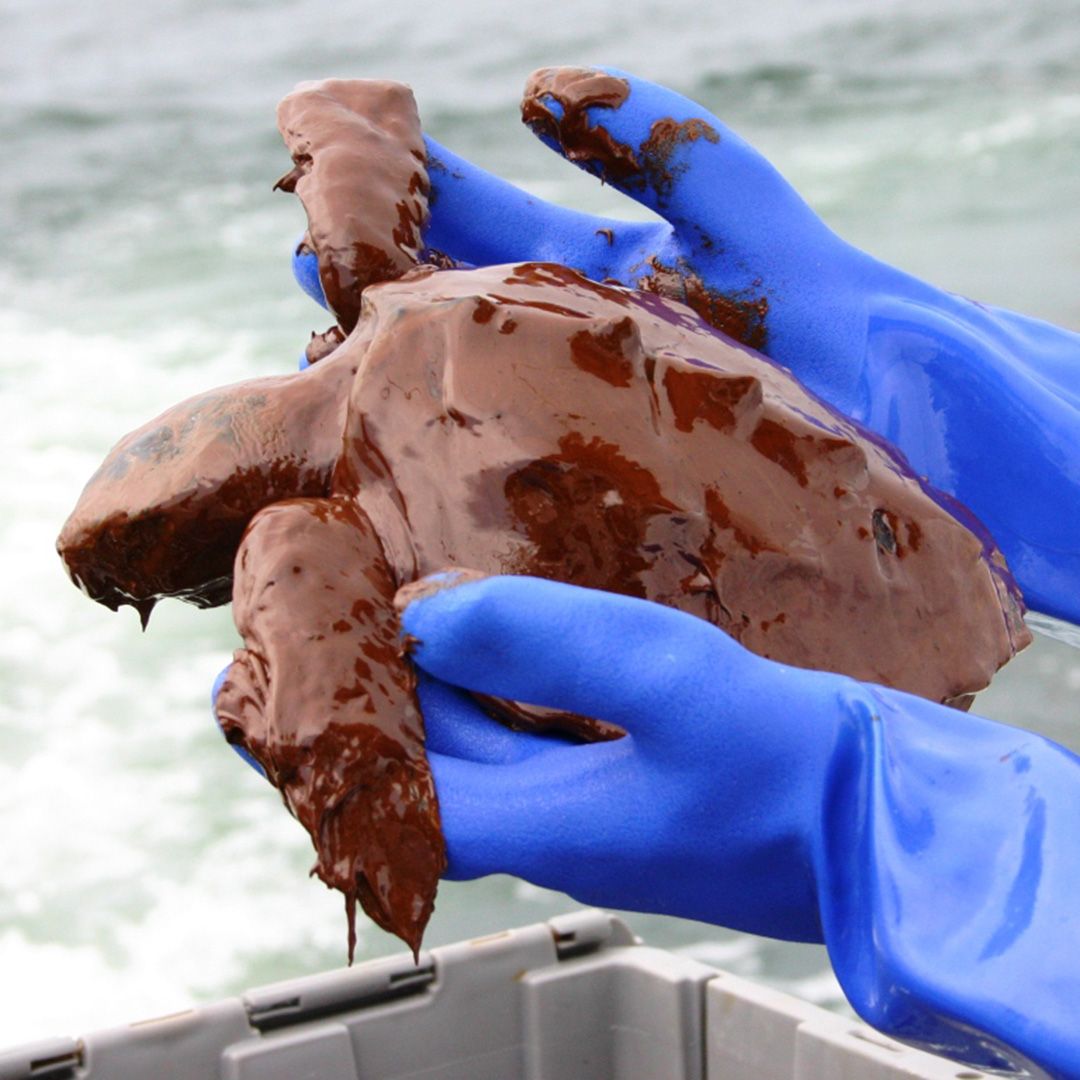Beach Erosion
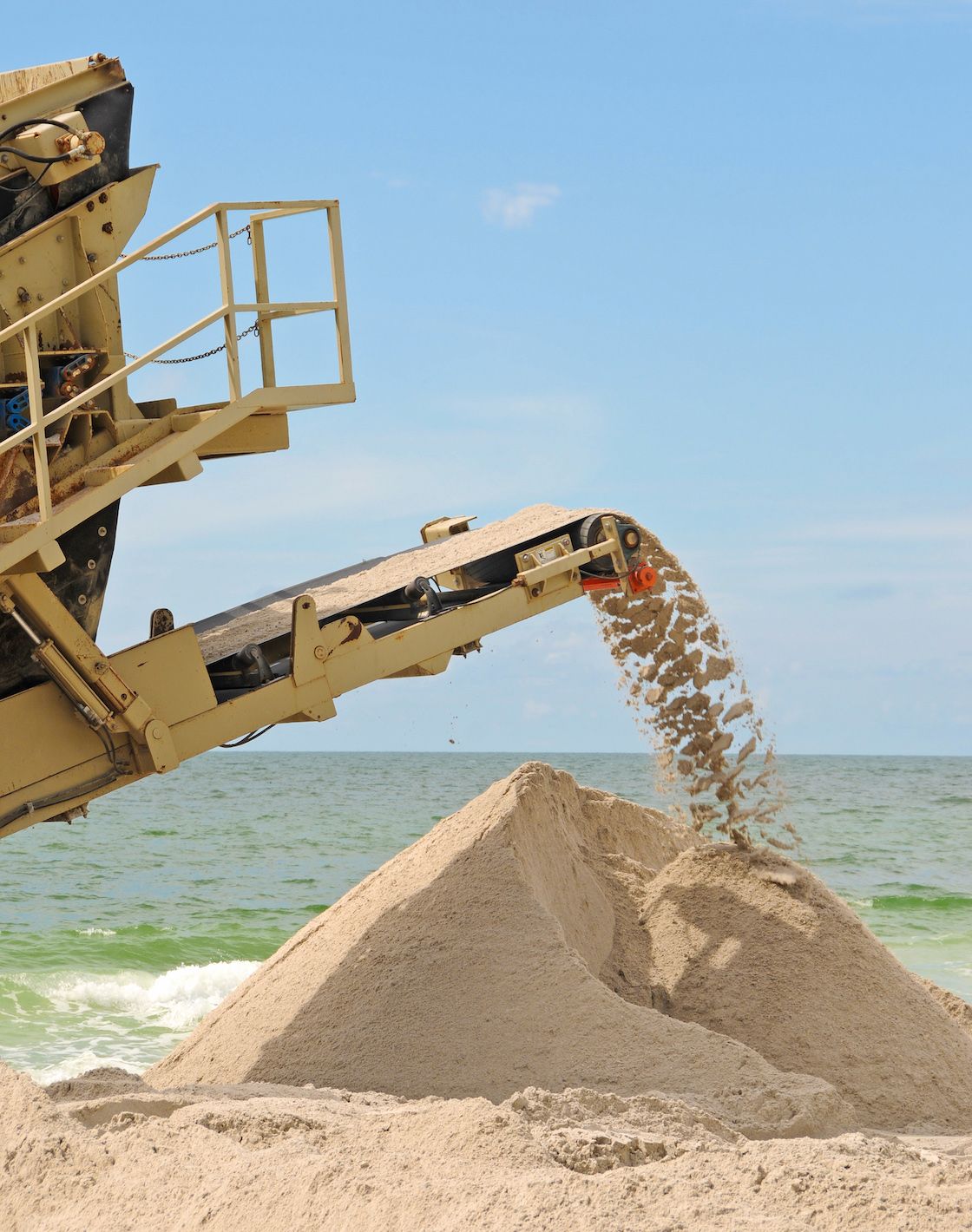
Erosion of Beaches can Negatively Affect Nesting Habitats
One way to address beach erosion is through beach nourishment. Nourishment consists of pumping, trucking or otherwise depositing sand on a beach to replace what has been lost to erosion. While beach nourishment is often preferable to armoring, it can negatively impact sea turtles if the sand is too compacted for turtles to nest in or if the sand imported is drastically different from native beach sediments, thereby potentially affecting nest-site selection, digging behavior, incubation temperature and the moisture content of nests. If renourishment is allowed to proceed during nesting season, nests can also be buried far beneath the surface or run over by heavy machinery. However, when done correctly and in accordance with all laws to protect sea turtles and other natural resources, beach nourishment can add nesting habitat where erosion had washed it away.
Taking a closer look
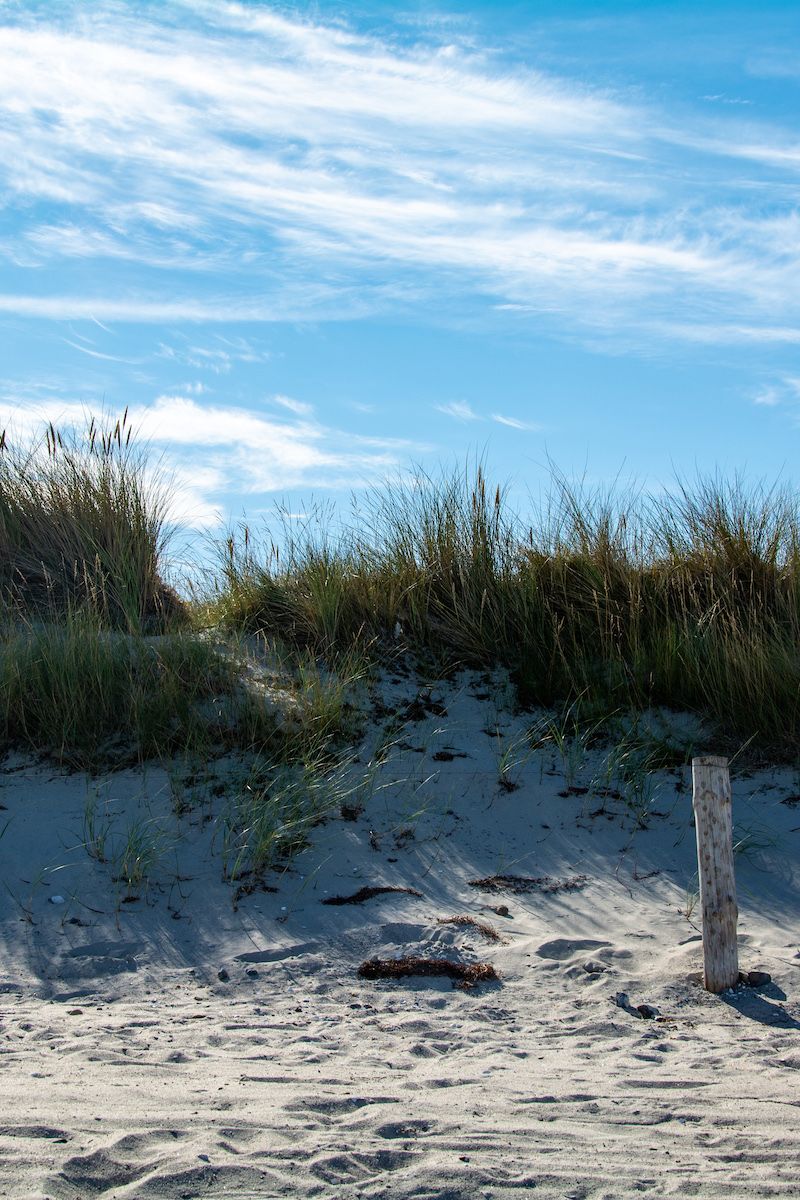
Coastal Management Benefits Humans & Turtles
Current regulatory policies must change if there is any hope of saving natural beaches. These changes cannot take place without the public’s help. The Sea Turtle Conservancy initiated a campaign to address the threats to Florida’s nesting sea turtles posed by coastal development, construction of sea walls, and increasing reliance on beach nourishment to protect poorly sited upland development. The Sea Turtle Conservancy’s Coastal Policy Initiative seeks to eliminate or reduce the continued destruction of Florida’s remaining coastal habitat by addressing the root causes – poorly designed coastal management policies and ineffective enforcement of existing laws and regulations.
Tips and Resources
Don’t build structures right on the beaches
Building directly on the beach puts structures at significant risk of damage or loss due to erosion, environmental harm, and rising sea levels. Develop further inland to minimize these risks.
Promote coastal construction set-back policies and their enforcement
Current regulatory policies must change if there is any hope of saving natural beaches. These changes cannot take place the public’s help.
Plant native vegetation on dunes to refortify the beach
Healthy dunes are one of the best natural ways to protect beaches from eroding during storms. Sea Turtle Conservancy regularly hosts dune-planting events in the Archie Carr Refuge to help replenish the habitat.
Elect Officials who Believe in Climate Change
Officials who acknowledge climate change are more likely to prioritize and implement policies aimed at mitigating its effects. These policies can include reducing greenhouse gas emissions, investing in renewable energy, and adapting infrastructure to be more resilient to climate impacts.


